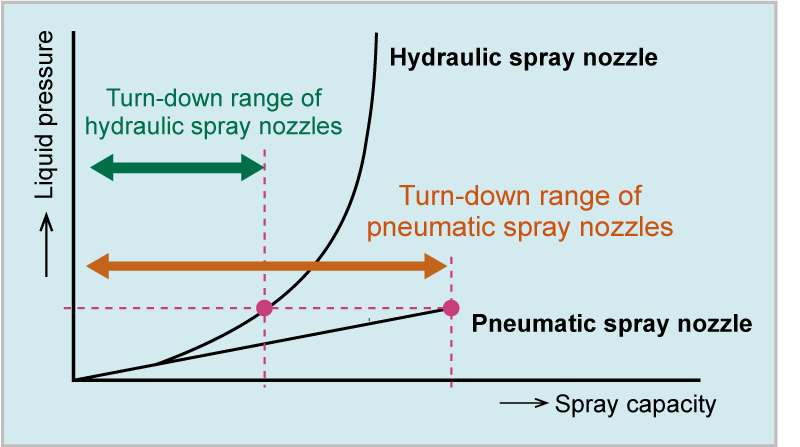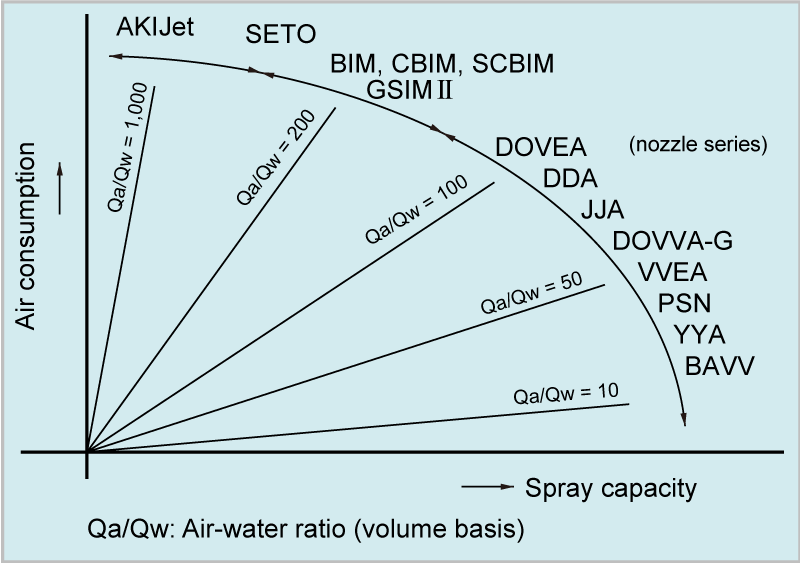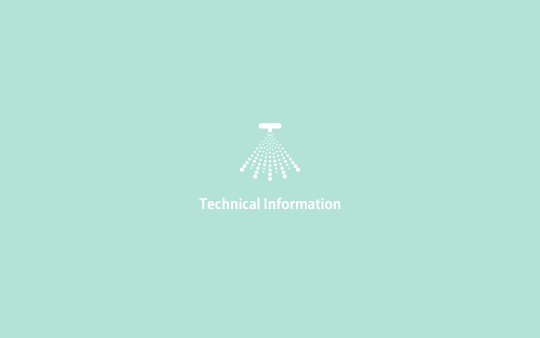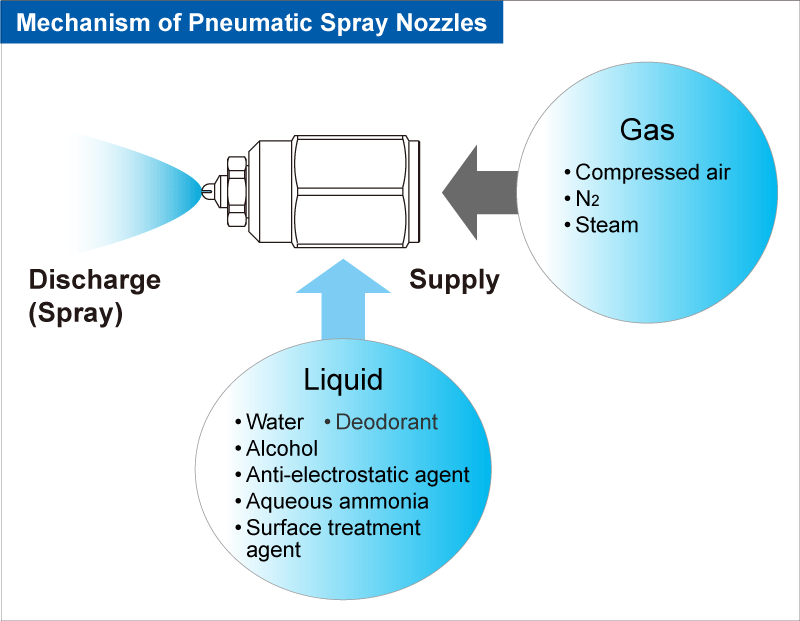Advantages of Pneumatic Spray Nozzles
Compared to hydraulic spray nozzles driven only by a pump, pneumatic spray nozzles have the following advantages.
Excellent atomizing performance:
Pneumatic spray nozzles are capable of producing fine atomization with a mean droplet diameter of 10 μm or less.
Large turn-down ratio:
Pneumatic spray nozzles have a large turn-down ratio of spray flow rate* with little variation in spray droplet size and flow distribution, which makes them ideal for spray flow adjustable nozzles.
*Spray flow rate is expressed as spray capacity in our catalogs.
Large free passage diameter:
Pneumatic spray nozzles have a larger free passage diameter than hydraulic spray nozzles, which helps reduce nozzle-clogging problems.
Pneumatic Nozzle Application Examples

What is Turn-Down for Spray Nozzles?
The turn-down range refers to the adjustable range of spray capacity, and the ratio of its minimum to maximum spray capacity is called the turn-down ratio.
A large turn-down ratio means that a single nozzle can cover a wide range of spray capacities, from small to large.
The spray capacity of hydraulic spray nozzles is proportional to the square root of the pressure, meaning the turn-down range is limited. To cover a wide range of spray capacities with a hydraulic spray nozzle, a large increase or decrease in operating pressure is required, which is not practical.
On the other hand, pneumatic spray nozzles can be adjusted in both air and liquid pressures, enabling wide spray capacity adjustments with minimal changes in pressure.
The green and orange arrows in the figure below indicate the respective turn-down ranges of a hydraulic spray nozzle and a pneumatic spray nozzle under the same liquid pressure range.

Therefore, pneumatic spray nozzles are ideal for cooling combustion gases and other applications that require nozzles with small droplet sizes and large turn-down ratios. Such nozzle series include the DOVEA, DDA, and JJA series.
What is Air-Water Ratio?
Air-water ratio is the rate of air consumption divided by spray capacity.
The ratio can be expressed in both volume and weight ratios. For the same nozzle, a higher air-water ratio will result in a smaller spray droplet size.
The air-water ratio in our pneumatic spray nozzle catalog is expressed as the volume ratio unless otherwise specified.

Related FAQ: What are Pneumatic Spray Nozzles?






